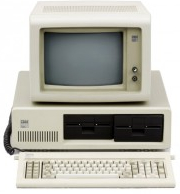MS-DOS and Word for Windows Source Code Available
At Computer History Museum
This is a Press Release edited by StorageNewsletter.com on April 3, 2014 at 2:54 pmThe Computer History Museum (CHM) has, with permission from Microsoft Corp., made available original source code for two historic programs: MS-DOS, the 1982 ‘Disk OS’ for IBM-compatible personal computers, and Word for Windows, the 1990 Windows-based version of their word processor.
IBM Corp. went outside the company for many hardware and software components of their 1981 personal computer. Though most vendors were kept in the dark about the project, code-named ‘Chess,’ IBM developed a unique relationship between their Boca Raton-based team and Microsoft, then a small company based in Seattle.
Microsoft, which was providing the BASIC language interpreter, agreed to also supply an OS. Without their own OS already in place, they licensed a product from nearby Seattle Computer Products and worked closely with IBM to make the changes they wanted. It shipped as PC-DOS for IBM and MS-DOS for other PC manufacturers.
The museum is releasing the source code of MS-DOS version 1.1 from 1982, and of version 2.0 from 1983.
“Version 1.1 fits an entire OS – limited as it was – into only 12K bytes of memory, which is tiny compared to today’s software,” said Len Shustek, Museum chairman.
Microsoft’s DOS-based version of Word, first released in 1983, was not a success against the dominant word processor of that era, WordPerfect. The 1989 release of Word for Windows changed all that: within four years it was generating over half the worldwide word processing market revenue. It was a remarkable marketing and engineering achievement. The Museum is revealing the technical magic by releasing the source code to version 1.1a of Word for Windows.
“MS-DOS and Word for Windows built the foundation for Microsoft’s success in the technology industry,” said Roy Levin, distinguished engineer and MD, Microsoft Research. “By contributing these source codes to the Computer History Museum archives, Microsoft is making these historic systems from the early era of personal computing available to the community for historical and technical scholarship.”
“We think preserving historic source code like these two programs is key to understanding how software has evolved from primitive roots to become a crucial part of our civilization,” says Shustek.
Other releases in the historic source code series: Apple II DOS, IBM APL, Apple MacPaint and QuickDraw, Adobe Photoshop.
Read also:
Apple II Disk OS Source Code at Computer History Museum
1978 code was writtent in seven weeks













 Subscribe to our free daily newsletter
Subscribe to our free daily newsletter
